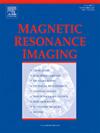核磁共振成像可替代 CT,用于腔隙性骨肿瘤的三维手术规划。
IF 2.1
4区 医学
Q2 RADIOLOGY, NUCLEAR MEDICINE & MEDICAL IMAGING
引用次数: 0
摘要
空洞性骨缺损被定义为原生骨组织的体积损失,需要精确的术前成像来制定治疗计划。虽然CT(计算机断层扫描)由于其对皮质骨的优异分辨率而传统上一直是分割的金标准,但MRI(磁共振成像)提供了独特的优势,特别是在软组织-骨界面的可视化方面。此外,MRI消除了与CT相关的电离辐射,使其成为一种有利的选择,特别是在良性和低级别恶性骨肿瘤的治疗中。尽管有这些优势,MRI固有的较低的空间分辨率可能会引入伪影,这可能会使分割精度复杂化。本研究评估MRI作为一种可行的替代CT在腔隙骨缺损治疗的术前计划的可行性。我们分析了80例良性和局部侵袭性原发性骨肿瘤患者的CT和MRI扫描结果,通过Mimics人工分割生成三维模型,并使用Geomagic Control x进行验证。使用Wilcoxon符号秩检验和配对t检验评估CT和MRI衍生模型之间的体积差异。MRI与CT扫描的平均体积差为2.68 ± 1.44 %,差异无统计学意义(p = 0.15)。此外,检查性别、年龄和诊断的多元回归分析显示,两种成像方式产生的3D模型体积没有显著差异(性别:p = 0.51,年龄:p = 0.98,诊断:p = 0.50)。这些结果支持基于mri的分割是一种可靠的、无辐射的CT替代方法,特别是当软组织边界的精确划定对手术计划至关重要时。本文章由计算机程序翻译,如有差异,请以英文原文为准。
MRI as a viable alternative to CT for 3D surgical planning of cavitary bone tumors
Cavitary bone defects, defined as a volumetric loss of native bone tissue, require accurate preoperative imaging for treatment planning. While CT (computed tomography) has traditionally been the gold standard for segmentation due to its superior resolution of cortical bone, MRI (magnetic resonance imaging) offers unique advantages, particularly in visualizing the soft tissue–bone interface. Furthermore, MRI eliminates the ionizing radiation associated with CT, making it an advantageous alternative, especially in the management of benign and low-grade malignant bone tumors. Despite these advantages, MRI's inherently lower spatial resolution may introduce artifacts, which can complicate segmentation accuracy. This study evaluates the feasibility of MRI as a viable alternative to CT in the preoperative planning of cavitary bone defect treatment. We analyzed CT and MRI scans from 80 patients with benign and locally aggressive primary bone tumors, generating three-dimensional (3D) models through manual segmentation in Mimics, validated using Geomagic Control X. Volumetric differences between the CT- and MRI-derived models were assessed using the Wilcoxon signed-rank test and paired t-test. The mean volumetric difference between MRI and CT scans was 2.68 ± 1.44 %, which was not statistically significant (p = 0.15). Additionally, multiple regression analysis examining sex, age, and diagnosis revealed no significant differences in the 3D model volumes derived from the two imaging modalities (sex: p = 0.51, age: p = 0.98, and diagnosis: p = 0.50). These results support MRI-based segmentation as a reliable, radiation-free alternative to CT, particularly when precise delineation of soft tissue boundaries is critical for surgical planning.
求助全文
通过发布文献求助,成功后即可免费获取论文全文。
去求助
来源期刊

Magnetic resonance imaging
医学-核医学
CiteScore
4.70
自引率
4.00%
发文量
194
审稿时长
83 days
期刊介绍:
Magnetic Resonance Imaging (MRI) is the first international multidisciplinary journal encompassing physical, life, and clinical science investigations as they relate to the development and use of magnetic resonance imaging. MRI is dedicated to both basic research, technological innovation and applications, providing a single forum for communication among radiologists, physicists, chemists, biochemists, biologists, engineers, internists, pathologists, physiologists, computer scientists, and mathematicians.
 求助内容:
求助内容: 应助结果提醒方式:
应助结果提醒方式:


